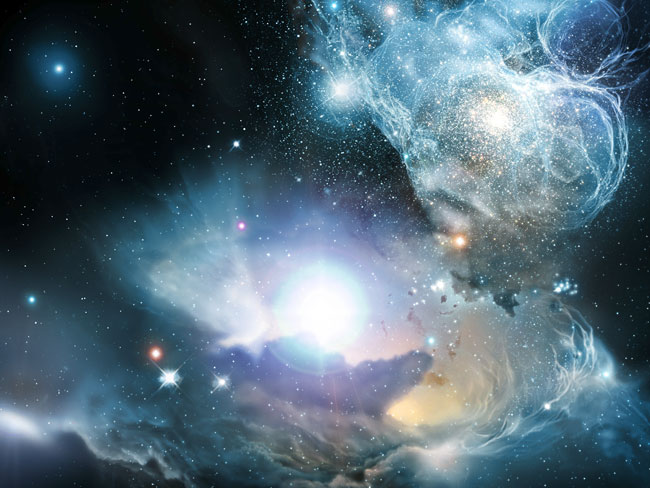A Primodrial Quasar

Explanation:
What did the first quasars look like?
The nearest
quasars are now known to be
supermassive black holes in the
centers of galaxies.
Gas and
dust that falls toward a
quasar glows brightly,
sometimes outglowing the entire home galaxy.
The
quasars that formed in the first billion years
of the universe are more mysterious, though,
with even the nature of the surrounding gas still unknown.
Above, an artist's impression shows a primordial quasar
as it might have been, surrounded by sheets of gas, dust, stars,
and early star clusters.
Exacting observations of three distant quasars now
indicate emission of very specific colors of the element
iron.
These
Hubble Space Telescope
observations, which bolster
recent results from the
WMAP mission,
indicate that a whole complete cycle of stars was born,
created this iron, and died within the first
few hundred million years of the universe.
Authors & editors:
Robert Nemiroff
(MTU) &
Jerry Bonnell
(USRA)
NASA Web Site Statements, Warnings,
and Disclaimers
NASA Official: Jay Norris.
Specific
rights apply.
A service of:
LHEA at
NASA /
GSFC
& Michigan Tech. U.

